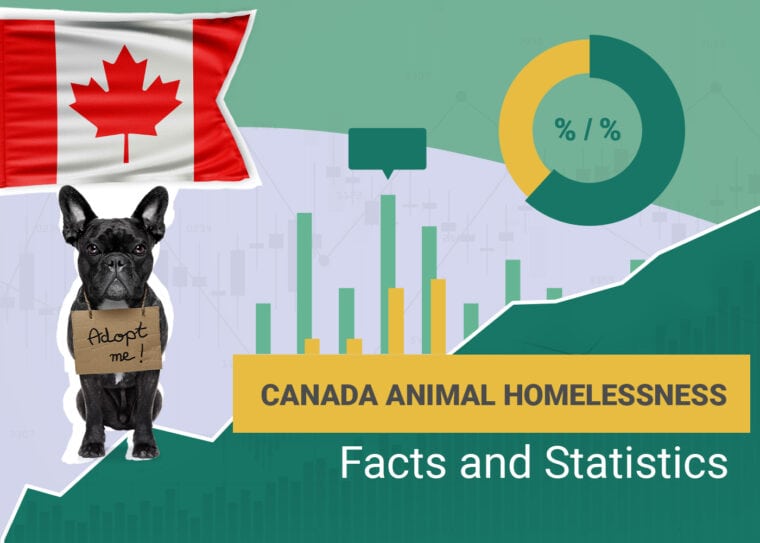
Click to Skip Ahead
Note: This article’s statistics come from third-party sources and do not represent the opinions of this website.
Animal homelessness is a serious problem in many countries. A 2019 report by Humane Canada showed that the number of animals that entered shelters in 2019 was over 100,000—a pretty shocking and saddening statistic.1
Some of the principal causes of animal homelessness include surrender by the owner and overpopulation due to animals not being spayed or neutered. In some cases, failure on the part of the owner to microchip or provide another form of identification for their pets results in the animal becoming homeless.
In this post, we’ll share some important statistics related to animal homelessness and welfare to better understand animal homelessness in Canada.

Top 13 Animal Homelessness in Canada Statistics
- In 2021, 20,974 dogs and 60,677 cats were admitted to animal shelters in Canada.
- In 2021, 44% of dogs in shelters were adopted and 10% were euthanized. 31% of dogs in shelters were reclaimed.
- In 2021, 62% of cats in shelters were adopted and 11% were euthanized. 6.8% of cats in shelters were reclaimed.
- A Humane Canada report showed that more than 11,000 animals of species other than cats and dogs entered shelters in 2019.
- In Ontario alone, more than 40,000 animals are admitted to animal shelters every year.
- 18% of pet owners in Canada acquired their pet during COVID.
- In 2022, Toronto Animal Services reported a 63 percent increase in the number of pets admitted to shelters.
- There are estimated to be between 1.2 million and 4 million cats without owners in Canada.
- Both feral and free-roaming pet cats are estimated to contribute to the deaths of between 100 and 350 million birds per year in Canada.
- One unspayed cat can produce more than 100 kittens in its reproductive life.
- In 2021, 1,546 dogs in BC SPCA shelters were returned to their owners.
- In 2021, 1,096 cats in BC SPCA shelters were returned to their owners.
- In 2021, 148 animals in BC SPCA shelters categorized as “other” were returned to their owners.


Animal Shelter Statistics
1. In 2021, 20,974 dogs and 60,677 cats were admitted to animal shelters in Canada.
(Humane Canada)
These statistics and data from previous years show that many more cats enter shelters than dogs each year. In 2021 alone, there were just under three times more cats than dogs admitted to shelters.
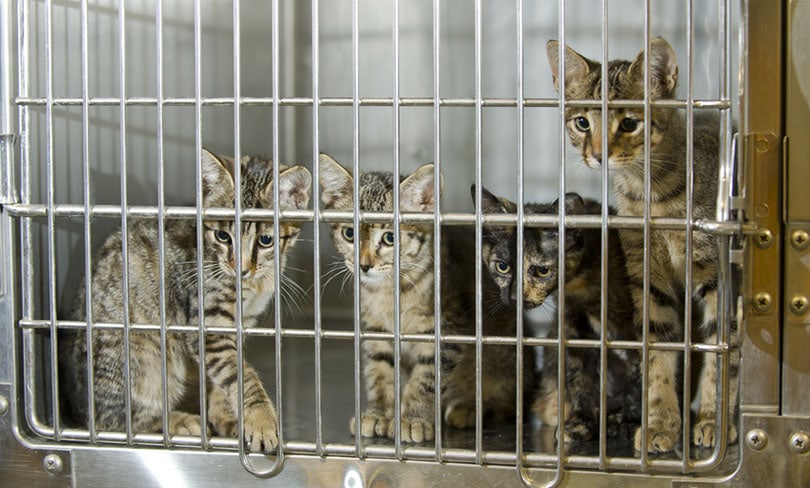
2. In 2021, 44% of dogs in shelters were adopted and 10% were euthanized. 31% of dogs in shelters were reclaimed.
(Humane Canada)
According to Humane Society data from the 2021 report, the number of dogs and cats euthanized in shelters is at a “historic low”. This is encouraging, and the numbers show that many more dogs are being adopted and reclaimed rather than euthanized.
3. In 2021, 62% of cats in shelters were adopted and 11% were euthanized. 6.8% of cats in shelters were reclaimed.
(Humane Canada)
Though a low number of cats in shelters were reclaimed in 2021, a much higher number of cats were adopted. The euthanasia rates for shelter cats during this year were described by Humane Canada as the lowest ever reported.

4. A Humane Canada report showed that more than 11,000 animals of species other than cats and dogs entered shelters in 2019.
(Humane Canada)
It’s not specified what kind of animals fall into the “other than cats and dogs” category, but they could include pets like rabbits, guinea pigs, hamsters, birds, and possibly even reptiles.
5. In Ontario alone, more than 40,000 animals are admitted to animal shelters every year.
(Toronto Humane Society)
The Toronto Humane Society elaborates on this statistic, explaining that overpopulation is one of the top causes of animal homelessness. Other causes mentioned include unethical breeding, poor management by municipalities, and failure to provide ID for pets.
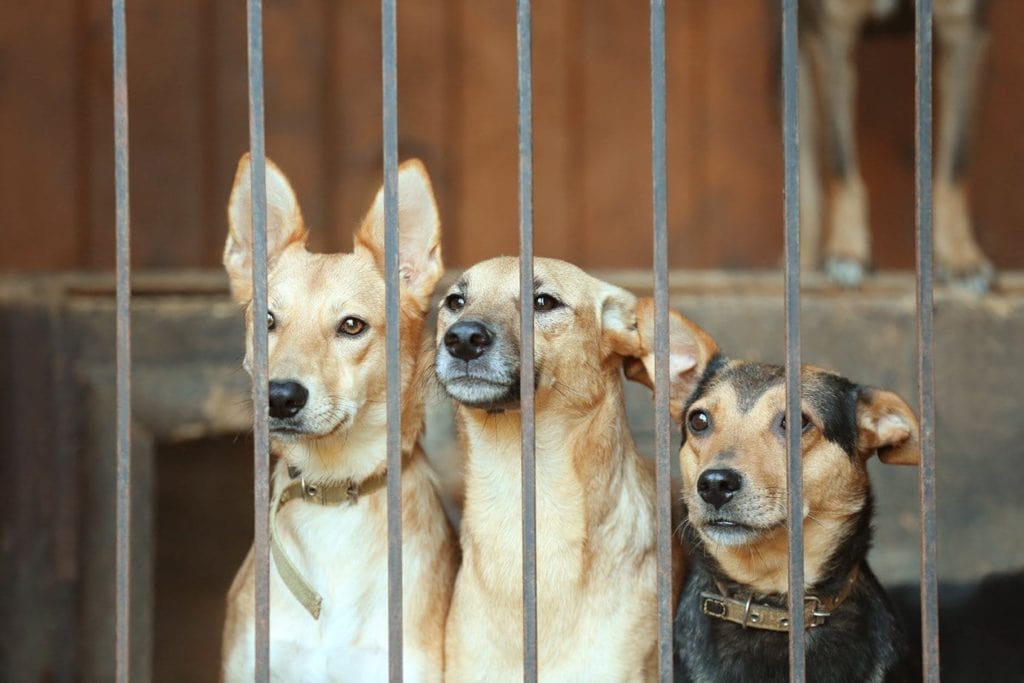

Pet Ownership and Surrender During COVID-19 Statistics
6. 18% of pet owners in Canada acquired their pet or pets during COVID.
(Narrative Research)
Pet ownership surged during COVID-19, which leads us to our next worrying statistic.
7. In 2022, Toronto Animal Services reported a 63 percent increase in the number of pets admitted to shelters.
(CBC)
The CBC report where we found this information explains that pets acquired during the COVID-19 pandemic are being relinquished due to lifestyle changes like having to return to work.
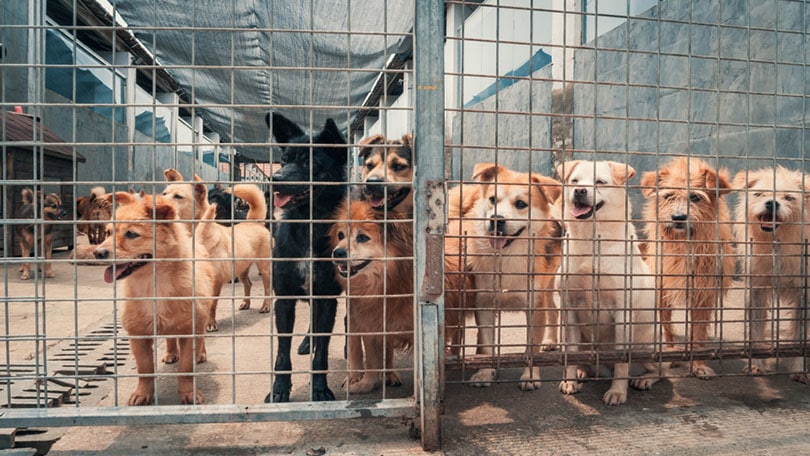

Feral and Free-Roaming Cats Statistics
8. There are estimated to be between 1.2 million and 4 million cats without owners in Canada.
(Cats and Birds)
Cats and Birds reports that Peter Blancher, a researcher from Environment Canada, has estimated that there are between 1.2 and 4 million unowned cats in Canada, made up of both stray and feral cats.
9. Both feral and free-roaming pet cats are estimated to contribute to the deaths of between 100 and 350 million birds per year in Canada.
(Avian Conservation & Ecology)
The problem of homeless cats extends beyond the dangers and health risks these cats face on a daily basis—it also greatly affects the bird population. According to Avian Conservation & Ecology, between 100 and 350 million birds are killed by feral cats and pet cats that are allowed to roam freely each year.

10. One unspayed cat can produce more than 100 kittens in its reproductive life.
(Roice-Hurst Humane Society)
One single litter can contain one to eight kittens and cats can give birth to two or three litters each year. This puts a lot into perspective given that overpopulation is one of the main causes of animal homelessness.

Homeless Animals Returned to Owners Statistics
11. In 2021, 1,546 dogs in BC SPCA shelters were returned to their owners.
(BC SPCA)
Out of 3,769 dogs admitted to BC SPCA shelters in 2021, 1,546 were reunited with their original owners.

12. In 2021, 1,096 cats in BC SPCA shelters were returned to their owners.
(BC SPCA)
Out of 8,259 cats admitted to BC SPCA shelters in 2021, 1,096 were returned to their owners. The number of cats admitted is much higher than the number of dogs and the return to owner rate is much lower.
13. In 2021, 148 animals in BC SPCA shelters categorized as “other” were returned to their owners.
(BC SPCA)
The total number of animals categorized as “other” that entered BC SPCA shelters in 2021 was 1,744. Out of that number, only 148 were returned to their owner.

Frequently Asked Questions About Animal Homelessness and Shelters
How Can We Solve the Problem of Animal Homelessness?
With so many stray animals and animals in shelters worldwide, you may wonder how you can make a difference.
Why Do Animal Shelters Have an Adoption Fee?
Many animal shelters have adoption fees for various reasons. The most important one is that the fee goes towards the shelter continuing to operate and allowing the staff to continue getting these animals into new homes. Food, blankets, and medical care cost a lot of money for shelters, and adoption fees help ease the financial burden.
In some cases, shelters also ask for a fee because it helps cover the cost of caring for your soon-to-be pet while they’re still at the shelter. This could include any medical care or procedures your pet needs like vaccines and spaying/neutering.
Moreover, adoption fees help dissuade ill-intentioned people from adopting pets for sports like dogfighting or other situations that could bring harm to an animal.
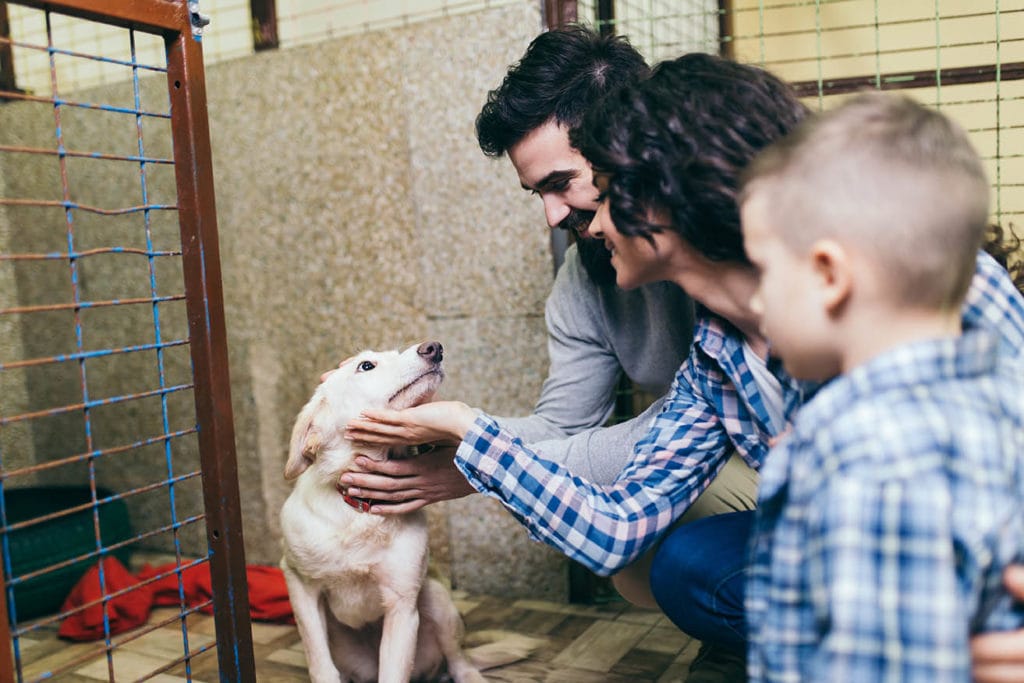
Why Do Animal Shelters Sometimes Euthanize Animals?
Shelters tend to euthanize animals that are sick with untreatable conditions or that are too aggressive to be safely adopted. Very sadly, another reason animal shelters sometimes have no choice but to euthanize animals is that shelters can easily become overpopulated.
This sometimes leaves shelter staff in the awful position of having to decide which pets are more likely to get adopted. It’s heartbreaking to imagine how shelter staff—people who care deeply for animals and dedicate their lives to helping them—must feel having to make such a decision.
Why Are There So Many Homeless Animals?
One of the biggest reasons behind so many animals being homeless is simply that pet owners are giving up their animals.
Unfortunately, some people don’t realize or think about what a huge commitment a pet is until it’s too late. Instead of working with the animal or trying to improve the situation, they give them up to shelters or, worse yet, abandon them somewhere. In some cases, people can’t afford veterinary care for their pets and decide to relinquish them as a result.
Overpopulation is another major factor in animal homelessness due to owners not getting their cats or dogs spayed or neutered. If you let an unspayed cat roam freely, they could have two or three litters per year, each containing up to eight kittens. Unexpected or unwanted kittens and puppies are sometimes given to shelters or abandoned, further increasing the number of homeless animals.
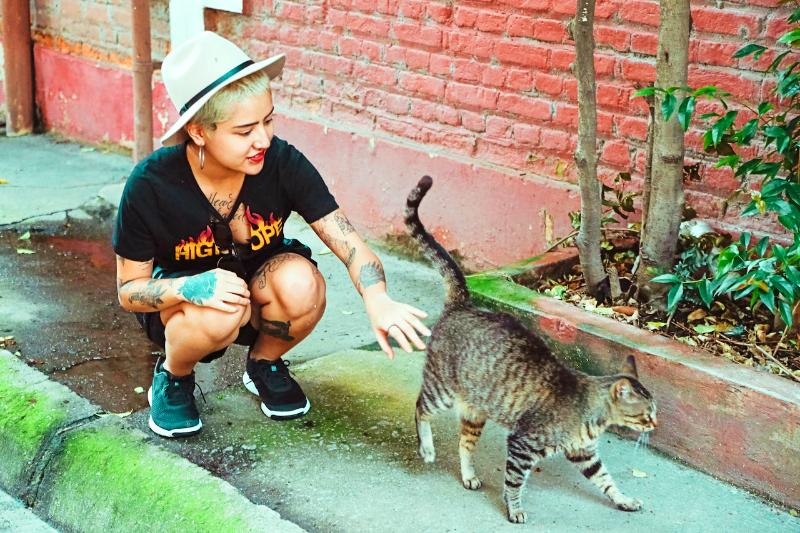

Conclusion
What we’ve learned from the above statistics is that there is certainly a big animal homelessness problem in Canada with more than 100,000 animals entering shelters each year. That said, there are some noteworthy positives. In particular, it appears that the number of shelter animals being euthanized is lowering, which is very encouraging.
Moreover, the 2021 Humane Canada data shows that many dogs in shelters are being reclaimed by their owners or adopted. The same report shows that over 60% of cats in shelters were adopted in 2021, though the number of reclaimed cats was much lower. Nevertheless, the data shows that the outcomes for both cats and dogs, but especially cats, have improved.
Featured Image Credit: Mazur Travel, Shutterstock





